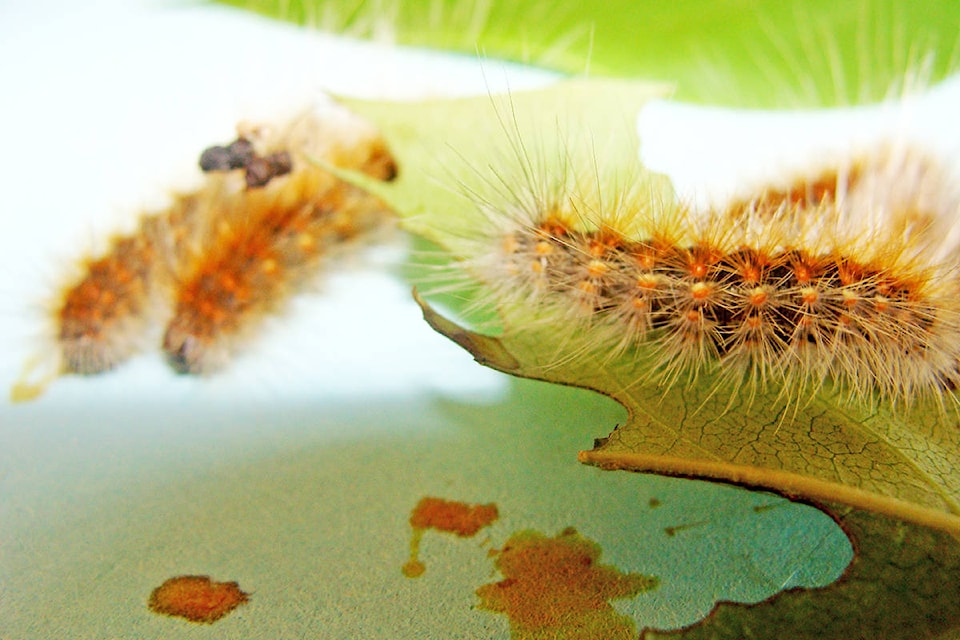When I first saw hundreds of brown moths flying around our place I thought they might be the Spruce Bud worm that have been devastating the fir trees for the past decade.
But on checking my Field Guide for Forest Damage in BC and after I noticed them (enclosed in silken tents) on some of our native choke cherry trees and one of our apple trees, a better fit was the northern tent caterpillar.
Many tents had been vacated hence the presence of moths.
I did manage to find some live larva and dispose of them but kept a few alive with lilac leaves so I could get some pictures. It was a bit of a challenge getting pictures of the fuzzy caterpillars as they would all head off in different directions once they were disturbed after placing them on a table top with some leaves.
The moths were a lighter brown than the pictures in the field guide but they definitely had a tent and not just a stream of silk line like the western moth and the caterpillars matched the field guide pictures and description.
READ MORE: Controlling knapweed one plant at a time
I was able to clip off the small branches that held the tent so I could place it in a pail for disposal.
Depending on the number of caterpillars they can damage most of the leaves of the tree but they don’t usually kill the tree which can often replace the damaged leaves the same year.
According to the literature the outbreaks occur about every 10 years when the caterpillars are able to overwhelm their natural predators which include parasites, other insects (flies and wasps), birds and diseases caused by fungus and viruses. After the egg masses hatch into caterpillars they spin silk to create an enclosure where they retreat at night for warmth and protection (hence the name tent caterpillars). A tent may be a bit of an exaggeration in that the silken mass is a loose ball of silk which becomes very fragmented after the caterpillars leave to become adults.
According to some other articles, in 2013 Prince George citizens were commenting on tent caterpillars attacking a variety of trees in the city over a three-year period. Other infestations had also been reported throughout the province. Western tent caterpillars were in Richmond and into the Fraser Valley from their natural habitat in the southern Gulf Islands.
I suppose we should be prepared to put up with these little pests since we have been exploiting a close relative for years in the production of silk. According to Wikipedia, the practice of breeding silkworms for the production of raw silk, has been under way for at least 5,000 years in China, whence it spread to India, Korea, Nepal, Japan, and the West.
“The domestic silk moth was domesticated from the wild silk moth Bombyx mandarina, which has a range from northern India to northern China, Korea, Japan, and the far eastern regions of Russia. The domesticated variety is fed mostly on the leaves of mulberry species and are closely dependent on humans for reproduction, as a result of millennia of selective breeding. Wild silk moths are different from their domestic cousins as they have not been selectively bred; they are thus not as commercially viable in the production of silk.”
Jim Hilton is a professional agrologist and forester who has lived and worked in the Cariboo Chilcotin for the past 40 years. Now retired, Hilton still volunteers his skills with local community forests organizations.
Do you have a comment about this story? email:
editor@wltribune.com
Like us on Facebook and follow us on Twitter.
